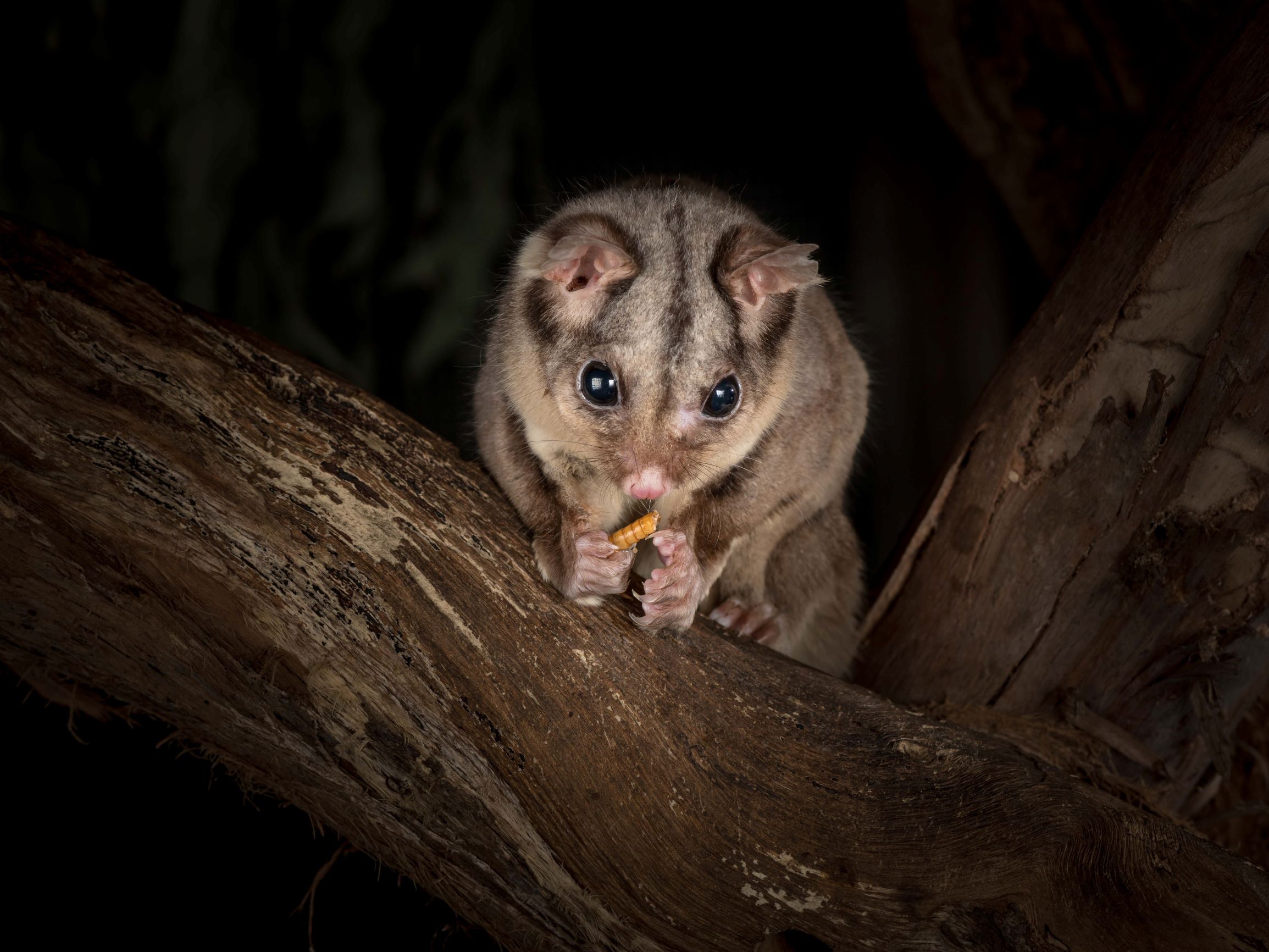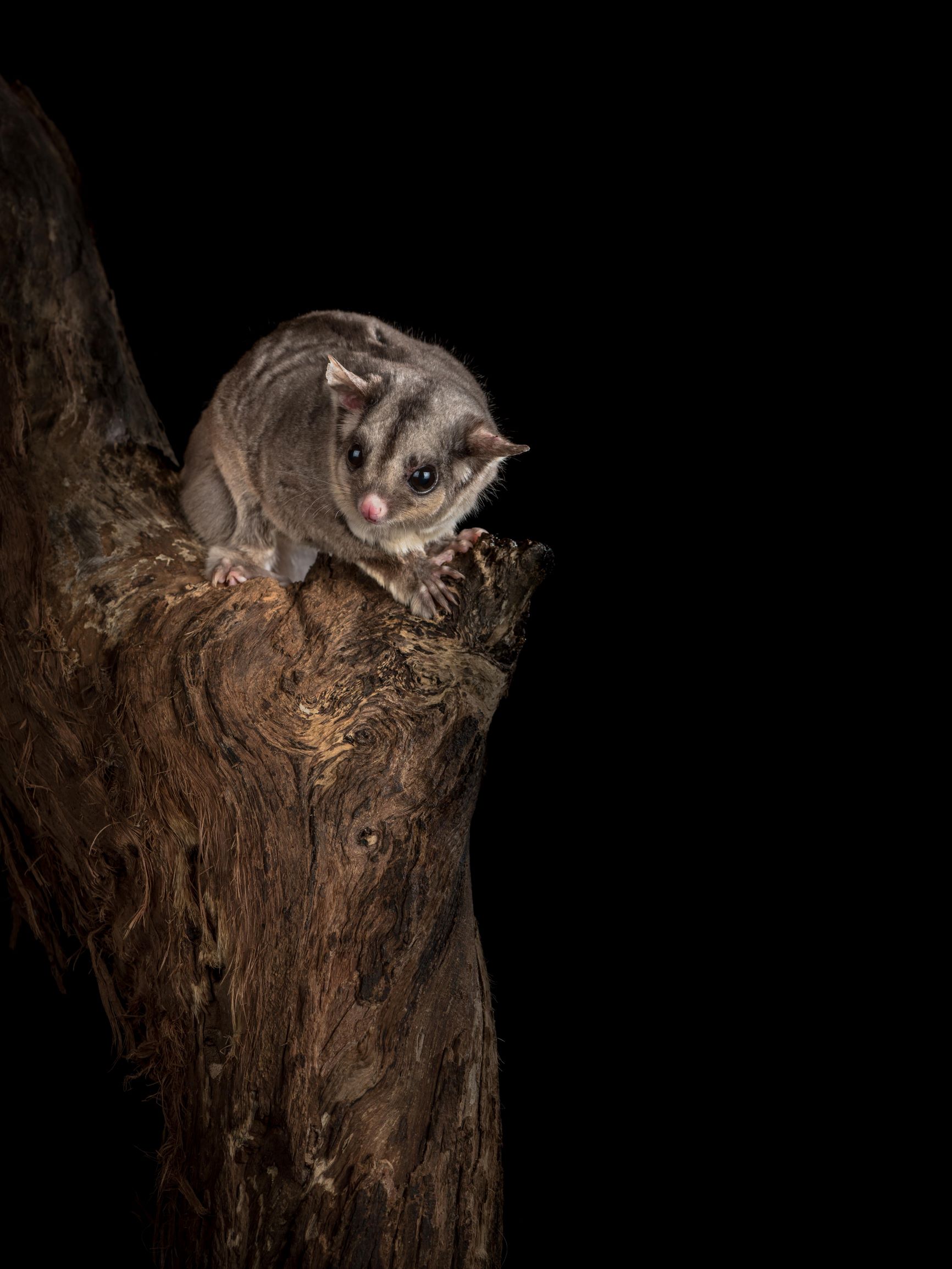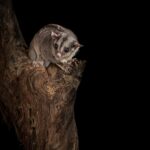Sugar Glider
(Petaurus breviceps)
Sugar Gliders are enchanting squirrel-like animals that live in forests and woodlands and travel through the treetops by gliding with the aid of membranes extending from their fifth finger to their ankle. In this way they can glide up to 50m between the trees, using their long bushy tails for stability and steering, to reach food and to avoid predators such as owls, cats, foxes and dogs.
DESCRIPTION
Their common name refers to their liking for sugary foods such as sap and nectar, and they particularly prefer habitats with eucalypt and acacia species. In the summer they are primarily insectivorous, and when insects are scarce in the winter they feed more on acacia gum, eucalyptus sap, manna and honeydew. Since pollen makes up a large part of their diet, they are likely to be important pollinators of banksia species.
The Sugar Glider’s furry coat is thick and soft and usually bluey grey, with a black stripe from its nose to midway on its back. Their undersides are a paler grey. Fully grown they measure 25-30cm from nose to tip of tail, and males and females weigh around 140g and 115g respectively.
Nocturnal animals, Sugar Gliders sleep during the day in nests made of leaves in hollow trees. Their eyes are large and set far apart to help them see in the dark, and allow for precise triangulation from launching to landing, and their ears can swivel to help locate prey. Groups of up to around seven adults and their young may form a social clan and share a nest. They will defend their territory aggressively and noisily from other clans or animals, and dominant males will mark their territory with secretions from scent glands on their chest.
Beautiful to observe, Sugar Gliders are also fantastically designed. Each foot has five digits, with an opposable toe on each hind foot. These opposable toes are clawless and able to bend so they can touch all the other digits, like a human’s thumb. This allows them to grasp branches. The second and third digits of the hind foot are partially fused together, forming a grooming comb. The fourth digit of the forefoot is sharp and elongated, aiding in extraction of insects from under the bark of trees. Young carried in the pouch of females are protected from landing forces by the septum that separates them within the pouch.
Sugar Gliders commonly give birth to twins, which, like other marsupials, are born undeveloped and furless, crawling into the mother’s pouch where they remain for just over two months. Eyes open around 80 days after birth and young will leave the nest, usually with their mother, to forage for food. Lifespan in the wild is up to 9 years. It is almost impossible to see Sugar Gliders during the day as they are nocturnal creatures, but they have safe refuge in the grounds of Wildlife Wonders and help to keep the ecosystem balanced and healthy.








